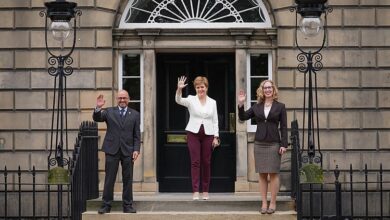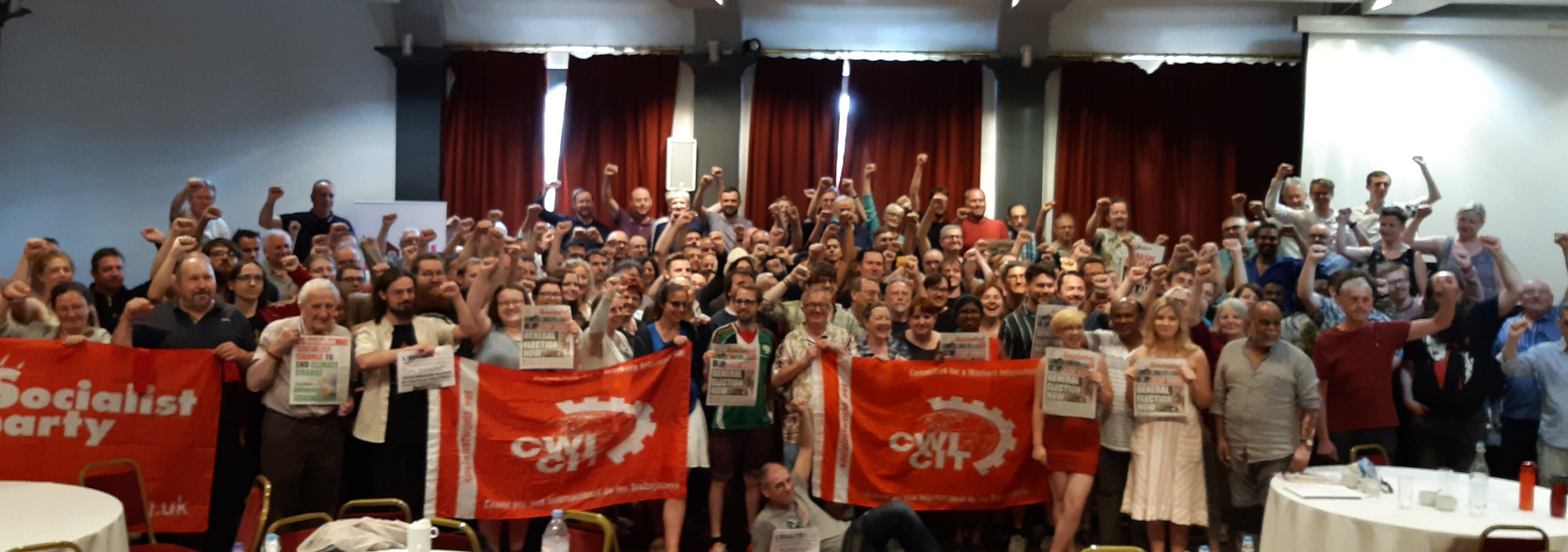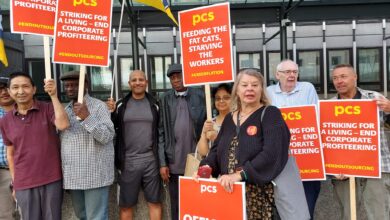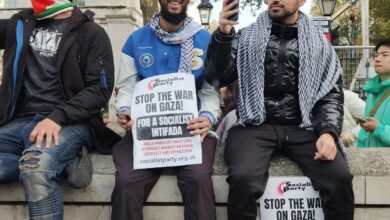50 years since the coup: The lessons of Chile
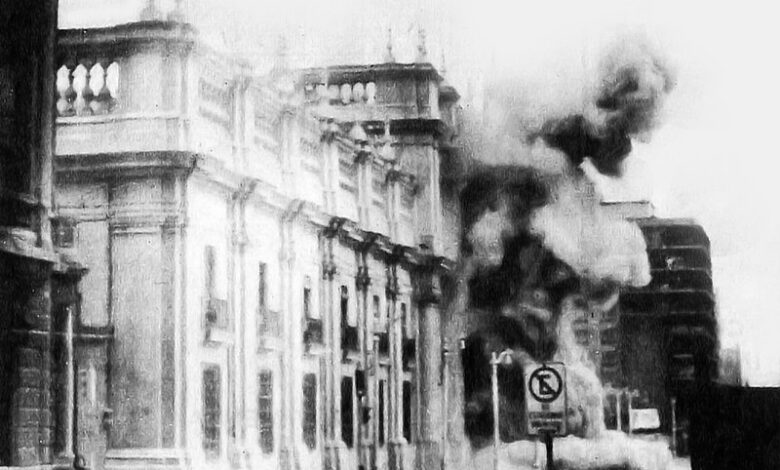
Jimmy Haddow
On 4 September 1970, Salvador Allende, Unidad Popular (UP) candidate, won the Chilean presidential elections with 36.3% of the vote. He defeated the hated leader of the right-wing Partido Nacional (PN) Jorge Alessandri, who polled 34.9%, with the candidate of the populist capitalist party, the Christian Democracy (PDC), Radomiro Tomic, trailing third with only 27.8%.
Allende’s election victory was greeted with great fervour, not only by the Chilean workers and poor but also the length and breadth of Latin America and internationally. Allende’s win took the Chilean ruling class and US imperialism by surprise. They were thrown into disarray.
Allende’s government implemented many reforms in the interests of the working class. These included increases in the minimum wage and pensions, freezes on rents and prices, nationalisation of copper owned by American business and coal, iron, nitrate, textiles and the American communication giant ITT. The right to vote was lowered to eighteen, the beginning of the agrarian reform and free school milk for school children was introduced for the first time.
(Paradoxically when the UP government was doing this, in the autumn of 1970, Margaret Thatcher, the milk snatcher, cut free milk to secondary school children under the Ted Heath Tory government.)
By the end of 1971 there were over 2000 land occupations, many not sanctioned by the government, and workers in factories actively taking over the companies from the corrupt owners and running themselves in cooperation with the UP government.
mass support
The UP government’s reforms gained vast backing, not only from the poor and working class but also from the increasingly radicalised middle-class. At the Mayoral elections in March 1971 the Popular Unity coalition won a land- slide 51% of the vote.
The election of Allende and the subsequent revolutionary events did not fall from the sky. The previous capitalist government from 1964 to 1970 had been a turbulent one. When it was elected it promised land reform, state intervention and civil liberties but did not carry them out.
But just the promise of reform triggered mass land occupations, strikes and radicalisation of the land workers, the working class and students which were ultimately put down by the state.
It was these events that led to the election of the UP government in 1970.
The UP was a six party coalition, dominated by two workers’ parties, Allende’s Socialist Party of Chile (PSCh) and the powerful Chilean Communist Party (PCCh), alongside smaller radical and middle class parties. Salvador Allende was on the right-wing of the Socialist Party although he described himself as ‘Marxist’, as did the Socialist Party and Communist Party.
The UP was called a ‘Popular Front’ and despite the workers’ parties being, both numerically and socially, in the majority it was arguing the idea of socialism would be achieved on a step- by-step transformation of society. There would be two stages – democratic and limited capitalist reforms first and socialism later.
This was the kernel of the strategy and programme supported by Allende and the Chilean SP and the PCCh leaders. In fact it was a re-run of the failed Stalinist policy of popular frontism during the Spanish revolution of the 1930s.
The forerunner of the Socialist Party Scotland – the Militant newspaper and its political journal, the Militant International Review – published a history of the Spanish revolution in late-1970 and early-1971 to warn of the dangers of a stages approach, and that the working class, and their political parties must act as an independent class force.
Part of a constitutional pact that the UP coalition agreed to before Allende was confirmed as president in 1970 was to leave the armed forces alone, along with the state bureaucracy and the media. Allende and the leadership of the CP and SP viewed the state as neutral, even up to the day of the coup.
state machine
For Marxists the ‘state’, in the last analysis armed bodies of men in defence of private profit, is the social and political organisation through which class rule is maintained. The capitalist class need a state run society and to make sure it remains in position. It is not neutral, and a socialist government cannot make it neutral.
The mass support for the Allende government posed the need to carry the revolution through to its conclusion. Measures such as the nationalisation of the major levers of the economy and banks and developing working- class control and management at every level of society were essential. As was the building of alternative forms of workers’ power through committees of workers, the landless, the youth and so on as an alternative to the capitalist state machine.
The leaders of the UP government, mainly following the Communist Party’s philosophy, sought means to appease the ‘so-called progressive wing’ of Chilean capitalism.
This meant that, as far as the leaders of the Chilean CP reasoned, the UP government must not go too far and too fast, because it will antagonise big business and provoke reaction. They argued that the working class at that stage were not strong enough to complete the socialist transformation of society and it was necessary to win the support of the middle-class through caution and not frighten them.
In contrast, a genuine Marxist and socialist analysis of the situation in Chile in 1970 is that even with a country that had a small working class it was this class that would play the decisive role in the revolutionary process.
The working class, due to its collective class consciousness in society and its role in production, must lead the struggle to overthrow capitalism and landlordism and begin the tasks of building socialism. Such a perspective would be based on an understanding of linking a socialist Chile to a voluntary socialist federation of south and Latin America and beyond. This was the basis of Leon Trotsky’s theory of the permanent revolution.
In that sense, Chile in 1970 had a comparison with Russia in 1917 – when the working class did overthrow capitalism and landlordism. In Chile the working class was in a far stronger position. In Russia the working class only comprised 15% of the working population. In Chile in 1970 over 46% were wage-earners. The Chilean working class was one of the strongest in Latin America and a successful revolution would have opened the prospect of a socialist revolution throughout the continent.
The counter-revolution took its first dangerous aggressive move in the last half of 1972. A national business strike was called for August, followed by a truck owners’ strike in October. The Chilean capitalist class paid for loss of business by having finance funnelled from the coffers of the CIA, principally on behalf of American big business. There was also and international blockade of raw materials for Chilean industry.
The UP government went on the defence and responded to the counter- revolutionary sabotage by organising a second anniversary demonstration in support of the UP government and Al- lende. It produced the biggest demonstration in Chile’s history with over 1 million participating in demonstrations. The whip of counter-revolution pushed the working class, poor and radicalised middle-class in a more left and revolutionary direction.
socialist measures needed
A genuine workers’ and socialist government would have taken economic measures against counter-revolutionary forces through the nationalisation of companies under workers’ control and management through democratic committees of the employees, the trade unions and the workers’ government, as a means to stop the sabotage.
A state monopoly of foreign exchange, in other words capital controls, the nationalisation of the banks and finance houses and a state monopoly of foreign trade as a means to control goods coming in and out of the country would have also been essential.
As it was, the Chilean workers and poor took every possible step to break the trucker’s strike and business stoppage without the lead coming from the UP government or even the Chilean trade union leaders.
Alternative modes of transport were organised to take food from the countryside to the towns and cities. Workers, land workers and peasants, in 1972, began to occupy and run their work- places and develop their own organisations.
Los Cordones Industriales, which were elected workers’ coordinating committees, and in reality were the basis of an alternative organ of work- ing-class power. The Cordones arose from the struggles of the working class and poor and adopted a programme far more advanced and far more revolutionary than that being posed by the Socialist Party and Communist Party in the UP government.
Alongside the Cordones developed the People’s Supply Committee’s or JAPs as they were called. The JAPs were built in the shantytowns, the poor areas of towns and cities and in the country- side. Their aim was to take over food distribution, control prices and distribute to the poor and needy and take control from big food producers.
committees of struggle
Both the Cordones and JAPs were committees of struggle outside the official structures of the trade unions and the UP government. They formed important elements of the ‘dual power’ that was evident in the revolutionary process. Dual power arises when the working class are moving towards the taking over the running of society but where the ruling class and its state machine have still not been broken.
Naturally, the capitalist ruling class were terrified by the emergence of the Cordones and JAPs. However, they were also condemned by the leaders of the Chilean CP and SP, including Allende. In January 1973 the Chilean CP minister in the UP government introduced a bill to return 123 factories that had been taken over by their workers back to their former capitalist owners. The Cordones immediately called a demonstration in which 30,000 participated. The central demand was “Power to the Workers”.
In March 1973, the Congressional elections were held and the ruling class hoped to use the elections to win the constitutional balance of power and remove Allende through a constitutional ‘white coup’.
The ruling class needed 67% of the vote and two-thirds of the seats. Despite the aggressive class campaign the UP coalition gained 43.4%, up on the presidential election, and the ruling class 54%. The capitalist knew they could not win by ‘democratic’ electoral means so the decision was to prepare for a full military coup.
The military in Chile, like any other country, are a microcosm of society: privileged leaders; downtrodden rank and file. The majority of the top layers of the armed forces are linked closely, tied by a thousand threads, to the capitalist ruling class. For the lower ranks of the armed forces, the majority are interrelated to the working class and poor by education, class, family background. Far from all could be trusted.
The September 11 1973 coup saw the majority of the armed forces confined to barracks until the coup was successfully secured. The Military leaders, including General Pinochet, understood far better than the ‘Marxist’ leaders of the CP or Allende the class tensions which existed in the ranks of the armed forces.
Shortly before the coup sailors on two battleships off Valparaiso were found reading left-wing and socialist material. This so terrified the Admirals that hundreds of sailors were arrested. Many were tortured to death. The leaders of the workers’ parties did nothing.
The talk of a coup was being discussed widely in the working class areas. When rank and file soldiers and sailors actually found plans for a coup they were arrested on the orders of the UP government and court-martialled. At this time Allende, the Socialist Party and Communist Party leaders invited the class enemy into the UP government. Generals Pinochet, Prats and so on were considered constitutionalists.
When the trade unionists and socialists and the working class started to arm themselves, because Allende and the UP government refused to so, it was too little and too late. On the third anniversary (September 4) of the UP Election there was a demonstration in Santiago with over a million people; the people chanted they will defend Allende and the government and asked for arms to do it – Allende said no.
coup
On September 11 the coup began. Just before it all the armed forces personnel who had left-wing or UP sympathies were rounded up and imprisoned, tortured and shot. The coup was organised by the Chilean capitalists and military, aided and abetted by American imperialism through the CIA. The fighting took place all day. Rather than call a general strike the workers’ parties in UP government told workers to go to the factories to defend them, with no arms, and they were picked off by the military.
Allende died, bravely, in the presidential palace. Tens of thousands of workers were arrested, 4,000 were killed in the weeks, months and years to come, almost all of them deliberately singled out as Marxists, socialists, communists or workers’ leaders.
The national and international capitalist ruling class intended to punish the Chilean working class by all means for unleashing a revolution.
The so-called ‘Chicago Boys’, a group of extreme right-wing economists, were given free rein to implement their neo-liberal economic and social political theories that became the norm in the 1980s and the years after throughout the rest of the capitalist world. The military dictatorship lasted until 1990.
Many lessons of the heroic Chilean revolution can be learned. Above all the need to build a mass revolutionary party with a clear socialist programme that can help lead the struggle for power.
